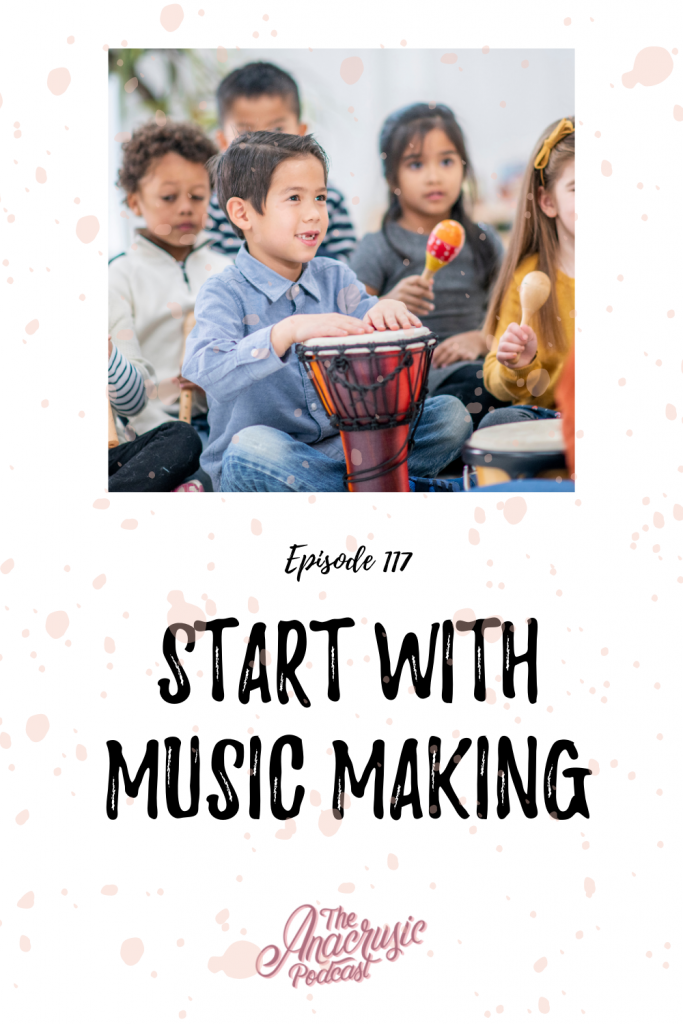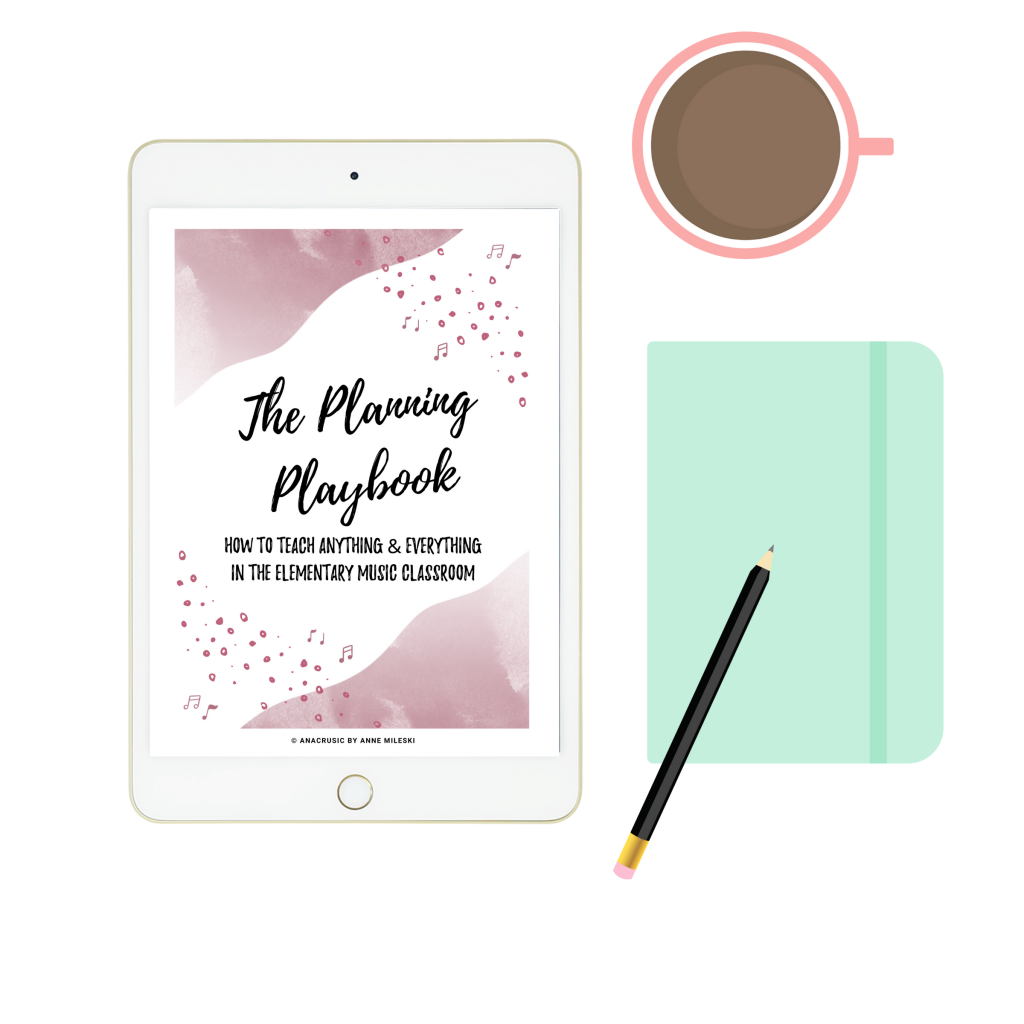
By allowing our students the opportunity to do that sing, say, dance and play PRIOR to including notation, we’re allowing them to speak before they read and write. We are creating that aural picture that is absolutely essential to contextualize the symbols that match the sounds.
Anne Mileski
I don’t know how to start.
If you’ve ever thought this to yourself, you’re not alone. As a matter of fact, it’s one of the first places we go, our default, if you will, when it comes to trying new ideas and incorporating new approaches to our teaching practice.
It’s something I often hear when I share an activity at a workshop, or I’m sharing different modes of active music making that may feel unfamiliar and uncomfortable to those who have never experienced them, let alone have never taught them to kids.
The answer is simple. It doesn’t feel easy, but it’s simple. Just Start. And start with with the music. And today’s podcast is all about how to start with active music making… instead of starting with notation.
Here’s what we discuss on today’s episode:
(1) What your curriculum really is (hint: NOT notation)
(2) How to cast a big picture vision that is actually doable
(3) What you need to do to finally just start
Download my FREE guide for how I literally teach everything in my classroom. You’re just a click away from getting it right to your inbox!
I LOVE SPOILING MUSIC TEACHERS! BY SIGNING UP BELOW, YOU’LL BE SUBSCRIBED TO ALL MY INSIDER TIPS & TRICKS!
